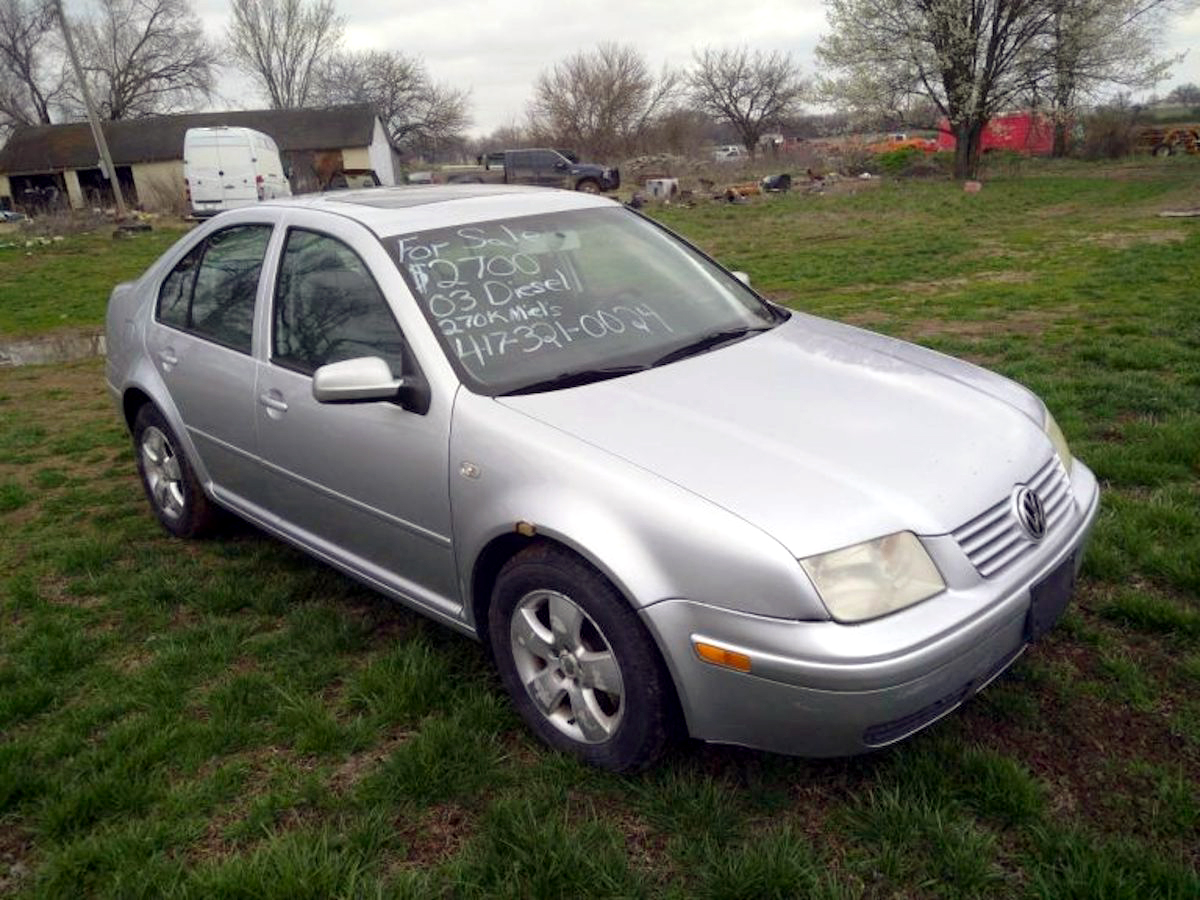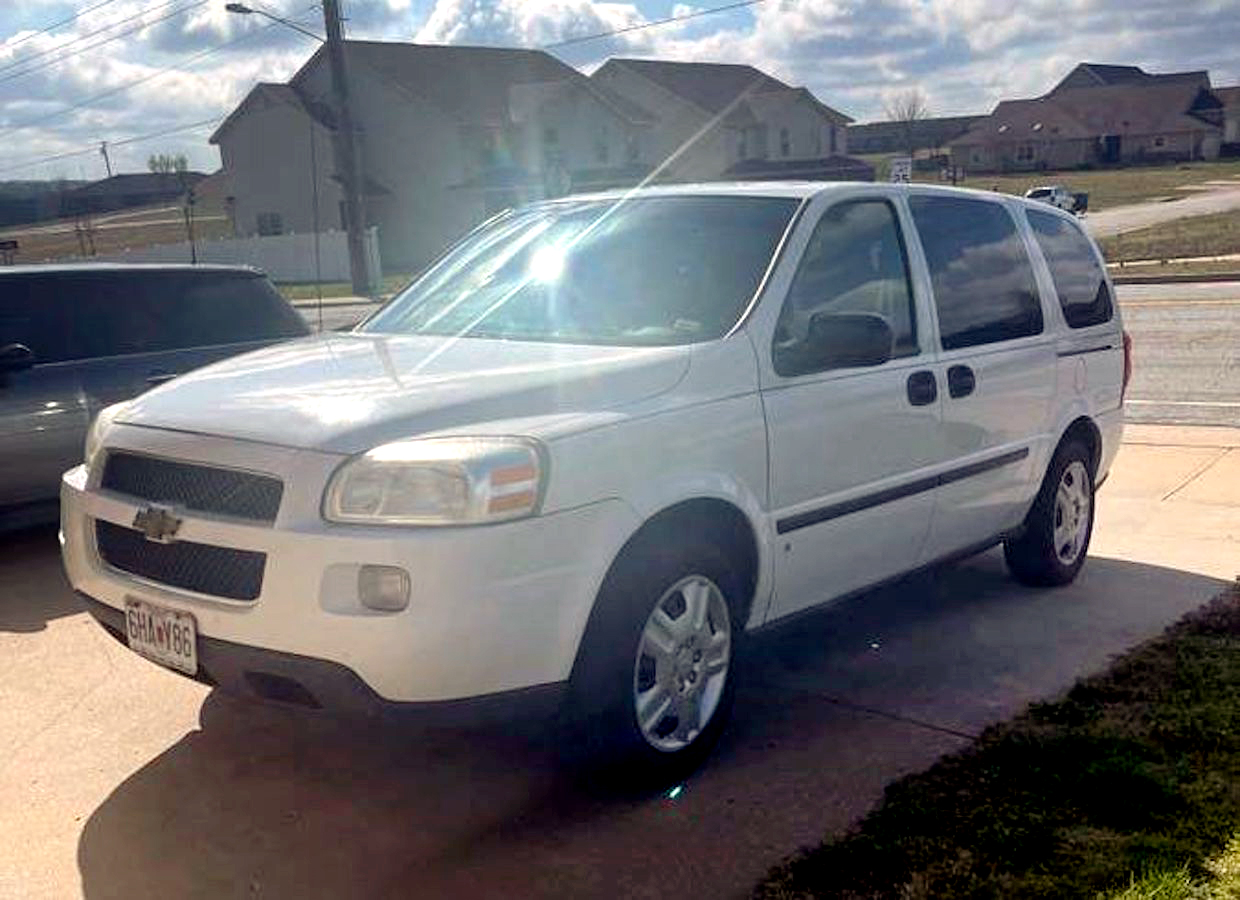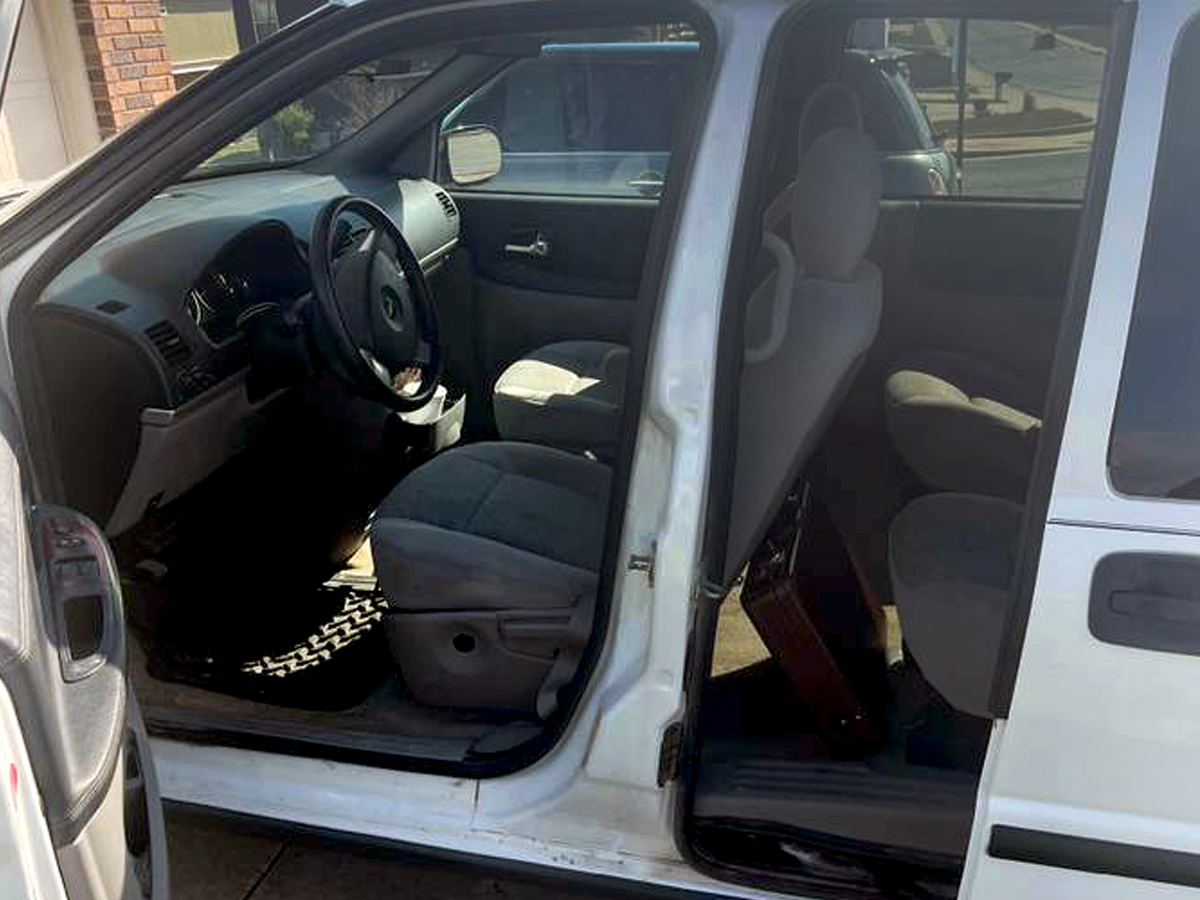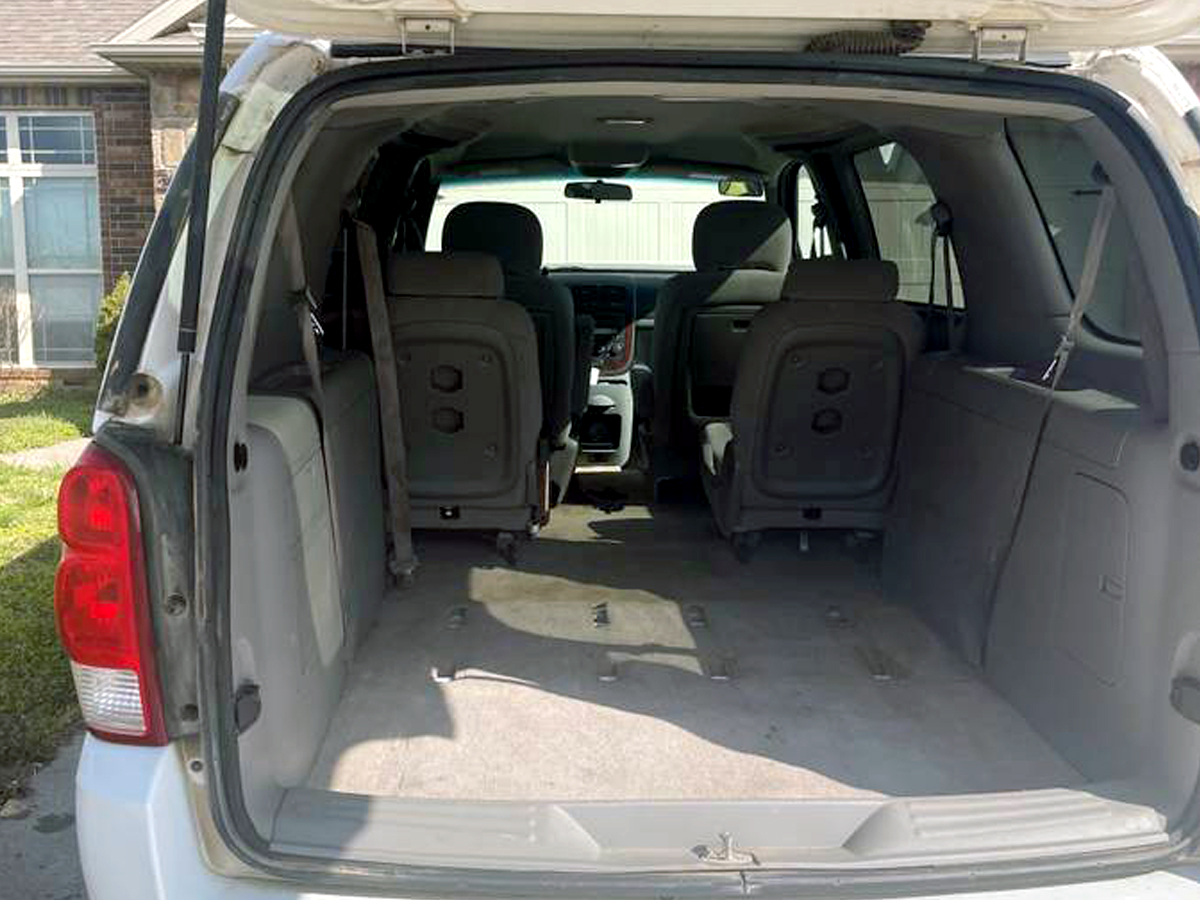Happy Friday! It’s the last day of the month, and the last day of The Autopian’s first year. (Can you believe it has been a year already?) Today, we’re looking for cars in an unlikely spot along our Route 66 tour, but it’s in the song, so we have to stop. But first, which convertible are you driving out of St Louis?

Narrow-but-decisive Mustang victory, it looks like. I think that would be my choice, too, four-cylinder and automatic be damned.
Today’s search takes us to Joplin, Missouri, on the far western edge of the state, right where Interstate 44 (which used to be Route 66) barely misses the southeastern corner of Kansas and drops into Oklahoma. It’s not the first place you think of when you think car culture, but if there is one thing I’ve found in my meager travels it’s that everywhere has a car culture, if you look hard enough. A beat-up Volkswagen and a Chevy minivan with a zillion miles on them may not be enthusiast dream machines, but they’re in our price range, so let’s take a look.
2003 Volkswagen Jetta TDI – $2,700
Engine/drivetrain: 1.9 liter turbodiesel overhead cam inline 4, five-speed manual, FWD
Location: Milo, MO
Odometer reading: 275,000 miles
Runs/drives? You bet!
I’ve always had a bit of a soft spot for VW’s diesels. My mother owned a Dasher diesel hatchback that she drove everywhere, and I have very fond memories of it. I came close to buying a VW diesel of my own a few times (including that same Dasher, years later), but never pulled the trigger.

Part of the reason is that the affordable ones all seem to have a metric shit-ton of miles on them, like this Jetta. That’s a good thing, in one way: it speaks to their durability, but once you get north of a quarter million miles, any vehicle starts feeling less “nice.” It may still run fine, everything may still work, but it just starts to feel, and look, tired.

Worse, this Jetta had an altercation with something, and it was apparently a bad enough hit to require replacement of the rear twist-beam axle. The seller made the mechanical repairs, but left the cosmetic damage alone, possibly to ward off further collisions. It’s not too bad, but it might eventually start to rust.

Inside, it’s grubby and worn, and I imagine the characteristic VW crayon smell has long since been replaced by stale sweat, old food, and diesel exhaust. But even with the wear and the damage, this car probably has a lot more miles in it.
2008 Chevrolet Uplander LS – $3,250

Engine/drivetrain: 3.9 liter overhead valve V6, four-speed automatic, FWD
Location: Joplin, MO
Odometer reading: 295,000 miles
Runs/drives? Sure does!
Everyone expects a Volkswagen diesel to be able to rack up the miles, but what about a Chevy minivan? This Uplander, the replacement for the Venture van, which in turn replaced the old “Dustbuster”-shaped Lumina APV, is closing in on 300,000 miles, and apparently still goes down the road just fine. Yeah, there’s the old line about “GM cars run like crap longer than most cars run at all,” but how do you explain this nearly-new-looking minivan with that many miles? It makes me wonder if there’s a picture of it somewhere, covered in rust and dents.

This Uplander is powered by a 3.9 liter version of GM’s 60-degree V6, an engine that traces its roots to the Middle Ages. Here, as in most applications, it powers the front wheels through a 4T65-E four-speed automatic. Chances are, with this many miles, this is not the original transmission, either.

The seller says this was a “school van,” but doesn’t elaborate. Whatever it was used for, the kiddos should count themselves lucky; these vans don’t have a stellar safety rating when it comes to crash-testing. But it does all the things a good van should: haul people and stuff around in some degree of comfort without causing much fuss while doing it.

The third row of seats appears to be missing; they may be in the garage, or they may be lost to time. As it stands, this is set up perfectly for a band van: four captain’s chairs, tons of space in the back for amps and a drum kit, and white paint that’s just a big blank canvas for a badass logo. (Every band has to have a badass logo.)
That’s it for the week! Have a great weekend, everyone, and if you’re in the LA area, stop by Porsche Santa Clarita tomorrow for the big anniversary shindig! I wish I could make it; there’s sure to be no shortage of cool cars and great conversation. On Monday, we’ll be continuing our virtual trip down Route 66 with a stop in Oklahoma. See you then!
(Image credits: Craigslist sellers)




Let me join the discussion as an Uplander owner. I bought my base model ’07 in 2008 with 36000 milers. It was and ex Enterprise rental car and I use it primarily as an interstate hauler for my race car trailer and for long distant interstate jaunts.
It’s been efficient, quiet, comfortable at 80 mph. I will say the base interior is a very satisfying space to do a thousand mile day. I have to believe the Uplander was heavily influenced by Bob Lutz as its interior is understated and well designed in a BMW/Honda way. The gauges have the look of a good Swiss watch, the storage and layout is nice, the materials though pedestrian are applied with care and thought. Its as if in one generation, GM got rid of the “melted playschool” design of the ’90’s. A prime example of that design was the ’94 Pontiac Transport that my Uplander replaced. I bet if you interviewed the owner of the Uplander that you featured, they would agree on my assessment of the interior.
I think you missed several mechanical things regarding the Uplander. First is there are two distinct releases. The first release in ’05 – ’06 was the new Uplander with the old 3.4 engine of the Venture. That engine dates back to the GM 2.8 V6 first launched with the 1980 Chevy Citation. That was an unhappy, underpowered, not very efficient, and prone to intake manifold leak design that I am sure soured the reputation of all models that had it. It also had the Venture 5 bolt hub brakes and rotors that date back to my Transport which I have seen accurately described as “potato chip thin”.
The ’08 in the ad is a ’07 -’08 second release car that had its major weaknesses corrected. The second generation had the new for 2006 “High Value” 3.9 V6 which has nothing to do with the Buick 3.8 V6 found in the dust-buster cars. Per Wiki https://en.wikipedia.org/wiki/GM_High_Value_engine the Uplander 3.9 was the second pushrod engine ever to have variable cam timing. The first was the Corvette and it was the Motor Trend innovation of the year. I can vouch that the variable cam timing allows excellent power. The van really moves with 240 hp and 240 lb⋅ft torque with 90% of the torque is available from 1500 rpm to 5500 rpm.
I have owned GM cars on and off for 40 years and my assessment of GM products over that era is that they were diligently engineered and developed, but indifferently sourced and manufactured. They were also subject to underspeccing the products on the early releases and getting them right in the later releases. Usually just before the product was cancelled.
By ’07/’08, the Uplander was the best version of itself and in my opinion was the best van at its time between Honda/Ford/Chrysler if you wanted a rugged work van, or a van that could tow 4000 pounds, or you wanted a comfortable vehicle to spend 15 hours at 80 mph and 22 mpg on the interstate. Unfortunately the reputation of the prior Lumina and Venture as well as the Uplander’s weak early specifications conspired to do the Uplander in. As such, by the time GM got the Uplander right, nobody was giving them a second look so they cancelled it.
Well, this is my assessment as the man that owns one. If I could buy a 10 year newer one I would. But the world has moved on and nobody makes a pushrod VVT engine van with a 4 speed overdrive transmission and beam rear axle that’s perfect for towing. So I maintain the one I have and actively work keep the tinworm at bay.
What is it with GM putting 6-lug hubs on cars that (probably) definitely don’t need it? First the original CTS-V, then the mid-cycle Uplander. What’s next, 6-lug Malibu??
Well, I assume their bigger weight/brake models have more lugs as they are higher load capable. So a 4000 pound uplander with uprated brakes gets uprated hubs too.
Same is true when they add the same uprated brakes to a sports sedan. I don’t know but assume the CTS-v might have the same as the uplander rotors (they are big) just like the Integra R based on the civic chassis ended up with accord/CRV? rotors.
03 is the holy grail year of the TDI. Last year of the ALH engine, but with the vnt turbo upgrade, flashable ecu, and ideal ratios in the transmission plus the larger clutch disk when other earlier transmissions used a smaller diameter clutch (trans code EGR is the good one).
Almost 400k miles on mine. Modded to hell and back. Hy35 turbo off a cummins 6 liter pushing 33psi making over 300hp when factory was 90hp.
50mpg all day long.
Looks like a decent work van to me. I’ll take it.
That Chevy Uplander exemplifies Kansas car culture- Ignoring the fact it’s boring, Kansans love high mileage. Every Kansan in my family, myself included, take the Hank Hill approach to cars, which is to find something basic and affordable (No matter if you’re rich or poor), and maintain it. And hooo boy do we love to maintain. Not modify, not baby, but maintain and run. Having a clean domestic car with 300k+ miles in rural Kansas means you have clout. A clean high mileage uplander is the Kansas rari’ (This is an exaggeration but you get my point). If you can go to Wichita and back in comfort with no worries of breakdown you’re an OG.
I know this, actually. My aunt lives about 50 miles fromWichita and drives a 250k-mile Dodge Stratus.
I’m not sure I’ve ever seen an Uplander in person.
You have, but each time, you forget within seconds.
Perfect rig for leaving the scene of a crime – completely, utterly unmemorable.
Another case of voting for the much cleaner, well taken care of vehicle over the less mileage but beat up one.
The Jetta because I reserve that generation of GM minivan for my worst enemies Also I left Joplin in my rear view mirror in 1994 and never want to go back
My inclination would be neither, but I have more use for the van, so it got my vote.
What I know about this corner of the country is there’s a casino right on all three states. The driveway is in Missouri, the parking lot is in Kansas, and you gamble in Oklahoma!
Sometimes I wonder why there’s so many stories of disgusted Americans driving nasty and unreliable 1.9TDI’s / Golf/Jetta MK4’s while here in Belgium they are considered the most reliable and sturdy VW’s of the last 20 years … Were they assembled in USA or did something change during import ?
I owned two Passats (2001 and 2005, still own that one) with the 1.9 TDI (130hp and 100hp) and it is in my opinion still the best engine VW ever made: quick enough, torquey enough for my trailer, very good on fuel consumption and no problem getting to high mileage (321 000 kms and 300 000kms). Reliable too. The only issue I had with one of them was the tearing of one of the air hoses of the turbo unit when driving in the mountains, the car was already 13 years old, lost a lot of power but still got home (from Spain to Belgium). The turbo hoses were a mess to work on, they were like 4 or 5 of them hidden and clustered in that engine bay. The newer Passat never had that issue despite getting to the same mileage. Cosmetically they keep everything together, but at 18 years, a few small issues can appear of course (like the rear door not closing well)… A few of my friends were driving second hand Golf 4’s before changing into newer cars and there too, never any issues. I still see a lot of Golf 4’s or Passat B5’s on the road here in Belgium, Germany and Poland.
So yes, I voted the Bora (Jetta), even if it is just for the nostalgia (my uncle drove one), but wouldn’t pay more than 500$ and would be using it for backroad hoonery.
VW makes great products but we in the states now have decades of Japanese reliability to compare to and.. there is no comparison lol
We don’t miss out on the Japanese either, but for road feel in fwd form, I still prefer my German cars (and comfort for my big frame also plays a role, the current Corolla is so small and low compared to a Golf or Focus). But for reliability, yes, they are even better.
Ours were assembled in Mexico, seemingly out of cardboard and tape.
Wait! They used tape and not string on yours? Lucky!
My Mother in law had a 2003 Jetta TDI, Made in Germany…. and it was the biggest piece of garbage. I know plenty of others who also had serious issues with them.
And were the issues mechanical ? Transmissions?
I honestly don’t know. I had a MK IV golf TDI for almost 10 years and 200k miles. I feel like a lot of the people who hate on them likely never owned one themselves. They are pretty easy to work on, especially if you have a good obd reader (vag com or even carista).
Then again, I daily a first generation touareg so maybe I’m the crazy one
Mk4 definitely not easy to work on. To get to the rear door lock modules, you had to remove both pieces of glass and the window track. And the modules failed with regularity. Mk5 used the same trash modules but at least you could just pop the door skin off (a bunch of small bolts but all easy to get to) replace the module and be on your way. Also had to replace the turbo in a friend’s Mk4. No fun at all! (But that was to be expected)
You have to factor in that unlike Americans, Europeans, and possibly most of the rest of the world, don’t tend to eat and sleep in their cars. It probably doesn’t explain mechanical wear, other than long periods of idling (0MPG) for the AC or heat, but it does explain the grody interiors.
Could be indeed, although I also almost live in my VW Caddy for work and at 4 years and 130 000km that VW is still holding up well for a gasoline 1.4 TSI and a very basic interior. I spend not a lot of miles but a lot of time in my car. We have more stop and go traffic (Antwerp/Brussels are as congested as LA or Tokyo) and city roads playing havoc on the transmissions and bad Belgian roads doing their number on suspensions. So I agree mechanical wearing out should be roughly on par.
Was just curious as to why it appears to be such a big theme in the US for this generation while the “bad” VWs here were to my experience later models, around 2010 (2.0 tdi and the 1.4 tsi then were never as robust) and lesser transmissions.
But then again, it’s only my experience and my family’s and what I encounter out there.
I’m annoyed by the “where it’s built argument”. At one time the US had a terrible reputation for build quality. Honda and Toyota started to build cars in the US and geography no longer mattered. Bad build quality is mostly bad engineering, production design and management. A well designed process could even be executed by an American worker. The big 3 just never really tried.
Case in point:
I bought a 2003 1.8T GTI new. Transmission had issues right off the lot. I was told “well those Brazilians that built it are cheap and shitty workers”. The mechanic that did the repairs laughed and told me the engine and transmission were shipped complete from Hungary for installation. The old German Dr. Von Service Manager bristled at this, as there is no way those Europeans could be at fault. The reality, according to the experienced mechanic is the bushings were a well known weak point that would unseat easily during assembly and the inspection process would not catch it.
That car served me well for over 13 years and over 200,000 km with the exception of frequent coil pack issues (design fault) and tissue paper plastic water pumps (cost cutting and apparently noise reduction). Both Hungarian engine issues, but DAMN those Brazilians and their lousy build quality!
Yeah, the switch gear eventually became toffee (bad material choice), but really the only reason the car was eventually done was even the billet steal undercarriage couldn’t survive the Toronto road salt any longer.
The answer is ‘maintenance’; it’s a common concept in Europe, but an esotheric notion here in the US, not helped by the lack of any mandated vehicle inspections.
Add to that the garbage quality of our diesel fuel (known to ruin the same Bosch fuel pumps that would run a million miles in EU) and the garbage quality motor oil (here ‘full synthetic’ was decreed to be merely a “marketing term” after the Mobil-Castrol spat, while in Germany calling a group III oil ‘full synth’ would be illegal).
Yearly oil changes and maintenance is indeed my routine as with many other owners. But not through the official VW dealers, but a trusted mechanic. The yearly inspection almost mandates that routine.
You’d be amazed at how quickly the back of a smaller van like this fills up with band equipment. I had an 04 Astro back in our touring days, and we packed it to the gills for just 3 of us. 24″ kick drums and Ampeg 8×10 cabs are friggin huge.
True, but you can also squeeze a Crate 4×12 half stack into a Dodge Omni 024 if you arrange it right.
When your car gets broken into, the loss of the half stack is the far bigger than even major damage to the car if you were driving an Omni.
When I was in a band, we hauled our gear in a conversion van with curtains and blinds, then an old station wagon with blacked out windows, then finally, a white panel van pulling an unmarked box trailer. For good reasons.
Between losing the omni and the crate head, I’m not sure what’s worse.
I’ve had both.
Pass on both, thanks.
Whelp, I’m going to have “Me and Bobby McGee” stuck in my head all day now.
And I’d pay more for that album than I would either of those cars.
The Jetta’s accident was apparently with a T1000.
These are so bad you made me look for this. I feel dirty now.
https://classics.autotrader.com/classic-cars/1982/chrysler/new_yorker/101846800
I will take the alh tdi and be pulling the drivetrain to throw in a better car, like a mk2 or mk3. Mk4s have been parts cars since 99.5.
The Jetta doesn’t have minor damage, that like metal sheers were taken to it. It is speed hole project. Ganted if you can do the body work or just need it for a couple of months…maybe. For now, the Van.